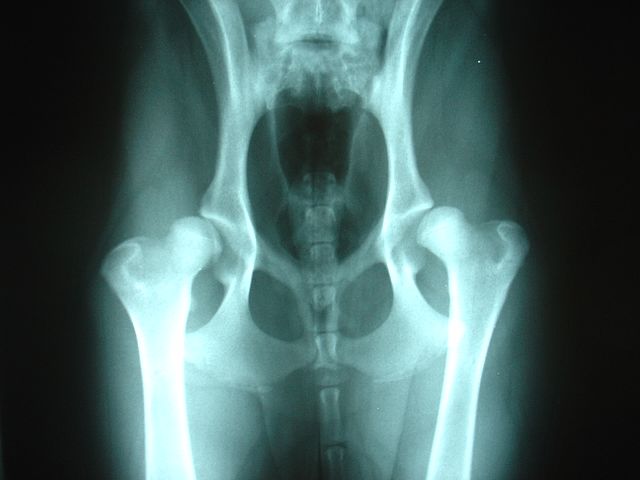
A Guide to Hip Dysplasia in Dogs
Hip dysplasia, one of the most common skeletal diseases in dogs, is a hereditary disease characterized by the abnormal development of the acetabulum as well as the head of the femur. The hip joint is made up of the ball and socket.
Hip dysplasia develops through an interaction of both environmental and genetic factors, with multiple genes as well as a complicated pattern of inheritance for the disorder. Hip dysplasia often starts when a dog is young, usually at around four months of age, and occurs when the hip joints fail to develop as they should and gradually deteriorate until the hip joints cannot function properly.
Symptoms of Hip Dysplasia in Dogs
The symptoms of hip dysplasia depends on the degree of laxity or joint looseness, the duration of the disease, the degree of joint inflammation, as well as the following:
- Early symptoms – joint looseness or laxity
- Later symptoms - joint degeneration and osteoarthritis
- Difficulty rising
- Decreased activity
- Persistent or intermittent lameness in the hind leg, often worse after activity
- Reluctance to jump, run, or climb stairs
- Back legs are unnaturally close together when the dog stands
- Swaying gait or “bunny hopping”
- Pain in the hip joints
- Reduced range of movement in the hip joints
- Grating sound with joint movement
- Loss of muscle mass in thigh muscles, and enlargement of shoulder muscles, due to the dog exerting more weight on his front legs to avoid putting weight on his painful hind legs
Treatment of Hip Dysplasia in Dogs
There are several types of treatment for hip dysplasia:
Surgical – several surgical procedures are available for the treatment of hip dysplasia, all of which depend on the dog’s age, size, and the severity of degeneration in the hip joint.
These procedures include Triple Pelvic Osteotomy, usually used in dogs of less than ten months old, and Juvenile Pubic Symphysiodesis, where early diagnosis is of utmost importance since the procedure is best done by 16 weeks of age and no later than 20 weeks of age, and also before there are any signs of arthritis.
Other procedures include total hip replacement, which is probably the best option for dogs that have degenerative joint disease due to chronic hip dysplasia. Then, there is also the femoral head excision, where the head of the femur is removed, and a fibrous pseudo-joint substitutes the hip.
Medical – Hip dysplasia can also be treated medically, but as it is an inherited disease, there is no product on the market that can stop it from developing. However, with weight management, supplements, exercise, anti-inflammatories, warmth, and proper sleeping areas, it is possible to reduce the progression of the disease. Massage and physical therapy will help to relax stiff muscles, and ramps help dogs navigate stairs and get in and out of cars in a less painful manner.
Diagnosis of Hip Dysplasia in Dogs
Your dog will have a complete physical examination at the vet, including a urinalysis, an electrolyte panel, a complete blood count, and a blood chemical profile. Inflammation caused by joint disease will be noted in the complete blood count. As part of examining the fluid work-ups and physical symptoms, the vet will also need a complete history of your dog’s health, when the symptoms started, as well as any possible injuries or incidents that could have contributed to your dog’s condition.
As the disease is hereditary, it will be helpful if you can provide the vet with information regarding your dog’s parentage as well.
Some dog breeders, particularly those who work with breeds that are prone to hip dysplasia, have also started to x-ray their dog's hips before they choose whether to breed them or not. In this way, those breeders are trying to selectively breed the tendency to hip dysplasia out of the breeds.
With proper treatment, dogs with hip dysplasia can live long, happy lives, but any dog that has hip dysplasia should not be used in any breeding programs.
Areas and Dog Breeds Affected By Hip Dysplasia
Since hip dysplasia is a genetic disease, it occurs all over the world. Gender does not seem to be a factor, but there are some breeds that are inclined to have a genetic tendency toward the disease. Most commonly affected are large and giant breeds, such as German Shepherd, Labrador Retriever, Saint Bernard, and Great Dane. There are rare cases of smaller breeds being affected, but these are less likely to show clinical signs.
